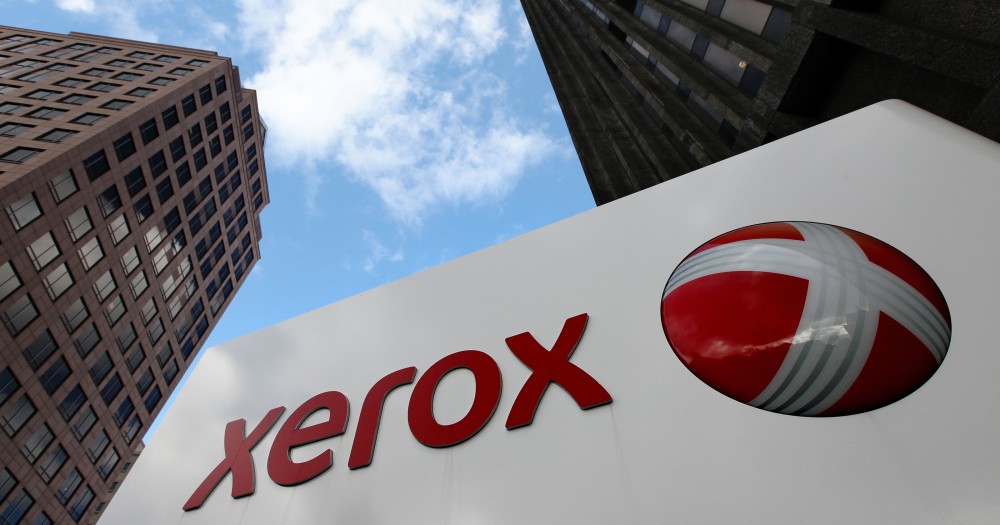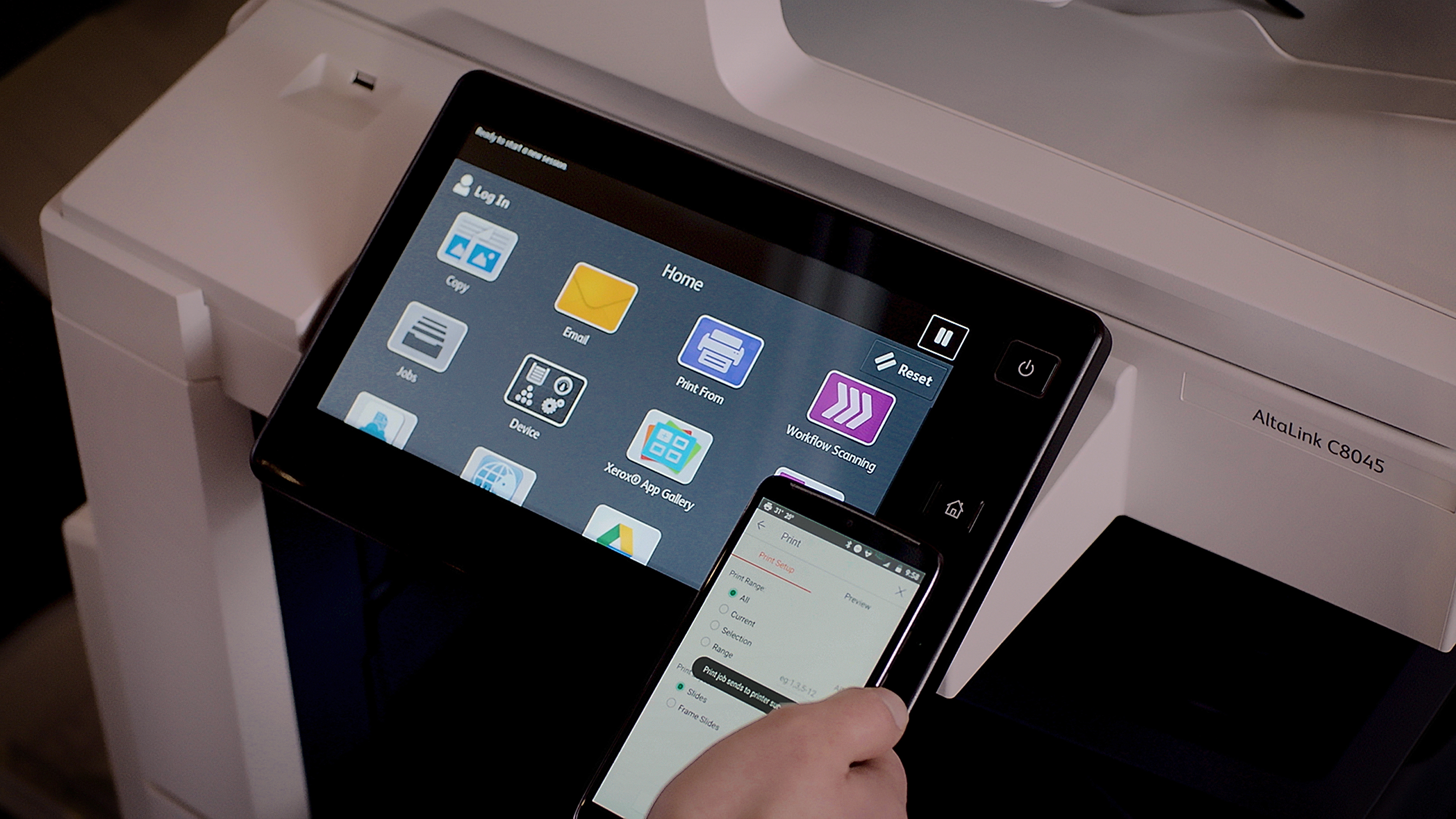
Can Xerox turn a corner?
October 22, 2018
Articles, Channel, Digital Transformation, Managed Print Services, Trends
Xerox is banking on software innovation to revitalise its business, but success will also depend on its ability to shift the cultural mindset of both its employees and partners.
Xerox revealed ambitious plans to transform its business after its $6.1 billion merger with Fujifilm Holdings was scrapped in May 2018. This may now be up in the air again, following the news on 17 October 2018 that Fujifilm is to mount a legal challenge for breach of contract. John Vistentin was appointed CEO of Xerox in May 2018 which, along with the new COO Steve Bandrowczak, and Mary McHugh, Xerox’s chief delivery officer, gives the company a leadership team with a wealth of expertise from IBM, Lenovo and HPE respectively. This equips the team to drive a new direction for Xerox that can capitalise on its heritage of technology innovation and push new boundaries in the software and services space – but the path for the planned changes may only be clear if Xerox prevails over Fujifilm in the courts.
Vistentin recently stated that Xerox can return “to the forefront as a leading tech company”, recognising that this will require “a relentless focus on optimisation and improving the effectiveness of its supply chain and go-to-market channels”. Notably, there will be a strong focus on re-energising the Xerox innovation engine and revamping its business model “to invest in our own capabilities, as well as M&A to enable commercialisation of the technologies we create”.
Driving workplace productivity through software innovation
In a market where print volumes are diminishing, but not disappearing, industry players are having to deepen their focus on better integration of paper and digital workflows. Xerox has already taken the lead in this space, having launched its ConnectKey technology in 2017.

At its recent Workplace Solutions briefing in New York, Xerox showcased its vision for accelerating workplace digitisation and the advancements in ConnectKey designed to deliver it. Xerox is aiming to bring workplace automation to the masses, from the SMB to the global enterprise, through ConnectKey-enabled ‘Workplace Assistants’. These smart MFPs offer advanced security, cloud and mobile connectivity and document capture and routing. As such, Xerox is redefining the traditional Smart MFP, bringing it into the heart of the workplace and elevating it beyond a simple peripheral device for printing and copying.
The success of Xerox’s workplace digitisation strategy depends on two critical factors: a broad solutions ecosystem, and an engaged salesforce that can offer compelling value propositions around workflow automation.
It is certainly increasing the capabilities of ConnectKey – both through its own developed apps, and the partner-developed apps enabled by its Personalised Application Builder programme. Examples include workflow apps, support apps which allow users to request supplies and service directly at the device, and simple information apps that provide interactive messaging, information screens or partner contact details. Xerox has just released ConnectKey apps for Salesforce, Quickbooks and Concur, which aim to reduce the inefficiencies associated with manual paper-based processes.
Driving channel engagement
With Xerox highly dependent on its channel to expand its SMB footprint, it needs partners to be on board with the transition from traditional hardware-led sales to software-led sales. This remains a challenge not only for Xerox but for the industry as a whole, with many channel organisations yet to adapt their business models to solutions and services.
However, Xerox has what is perhaps one of the more advanced channel partner networks for delivering solutions, although this primarily encompasses agent/concessionaire partners that only sell Xerox products. Today Xerox reports that it has trained around 400 partners to capitalise on the apps opportunity, either by building their own or by pushing third party apps. One channel partner, JustTech, has reported a revenue increase from $2 million to $8 million since it started app development. It now has? more than 40,000 apps installed on Xerox devices globally.
However, for Xerox to truly widen its SMB presence, it will need to attract more multi-brand channel partners. Although ConnectKey technology can prove appealing as a key differentiator between brands, the IT-centric channel in particular will not necessarily prioritise or have the resources to build apps. Xerox is expanding its focus on this broader channel, and it will be interesting to see how much traction it can gain in this space.
What does the future hold?
Quocirca’s Print 2025 research revealed that innovation is the top priority for growth amongst print manufacturers. Creating a culture of innovation was also a top challenge for business leaders. With its ConnectKey technology, Xerox is certainly pushing software innovation in its core business. However, like other industry players it will need to look to drive innovation beyond its core to remain relevant in this age of digital disruption.
To fuel growth and drive innovation in both technology and its business model, embracing a start-up mentality will be key. Although large legacy corporations like Xerox may be risk averse, adapting elements of start-up culture and practices can make them less vulnerable to disruption.
When it comes to emerging technologies such as AI, robotic process automation (RPA) and the Internet of Things (IoT), Xerox has the opportunity to not only collaborate with start-up partners but also leverage its strong innovation heritage through PARC. PARC is already developing new AI technologies designed to improve worker productivity, for instance collaborative content authoring, augmented reality, meeting analytics and conversational assistants. It remains to be seen how and when these will be commercialised.
Perhaps what is lacking today is a clear strategy around managed IT services. Quocirca’s Print 2025 research reveals that SMBs and enterprises will be looking to IT service providers to potentially manage both their IT and print infrastructures. While today Xerox offers a comprehensive range of managed print services, opportunities to collaborate with systems integrators and service providers in the IoT space could help broaden its appeal.
Xerox faces some challenges ahead, not least in simplifying its business to remove complexity and react faster to market changes. While the new board has strong ambitions to transform Xerox, the company is to some extent saddled with a legacy hardware-focused culture. Changing the mindset not only of employees but also its channel partners will be critical in driving success and transforming to a software and innovation-led business.
Xerox revolutionised the workplace with the first copier in 1959. With its new executive board and a reinvigorated technology vision, it must now shape itself into a more agile and high-tech company that can help the print and digital worlds converge. Sixty years on, it may just be set to revolutionise the workplace once again.




